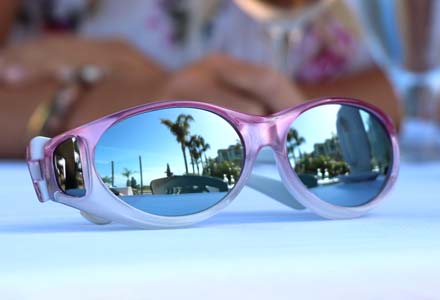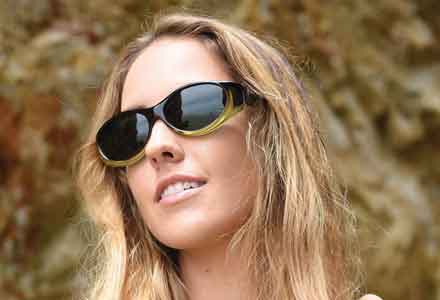Cocoons Fitovers, Technology, Visual Performance
Polarized vs. Non-Polarized Lenses: Which is Best for Over Glasses Sunglasses?
Have you ever wondered whether polarized or non-polarized lenses are the better choice for your over glasses sunglasses?
It’s a common question, and the answer depends on what you need most in your daily life.
In this article, we’ll walk you through the pros and cons of each option, and we’ll also share how different Cocoons models can fit your specific needs, helping you decide which eyewear is right for you.
What Are Polarized Lenses?
Polarized lenses are made to help with one big issue: glare.
If you’ve ever been out on a bright day and noticed how hard it is to see because of light bouncing off water or shiny surfaces, that’s where polarized lenses shine.
They block those annoying light reflections, letting you see clearly and with less strain.
Whether you’re driving, fishing, or just enjoying the outdoors, these lenses can make everything look sharper and more comfortable for your eyes.
What Are Non-Polarized Lenses?
Non-polarized lenses are your standard lenses that reduce overall brightness but don’t block glare in the same way polarized lenses do.
They don’t filter out light reflections, but they still provide important UV protection, making them useful for everyday outdoor wear.
These lenses are often chosen for specific vision needs, especially indoors, where reducing glare isn’t as critical.
People with light sensitivity or certain vision impairments, like macular degeneration or cataracts, may prefer non-polarized lenses because they reduce brightness and elevate contrast levels.
Our specialized Hazelnut and Orange lenses are specifically engineered to filter out high-energy visible (HEV) blue light, which can be particularly bothersome for individuals with sensitive vision or eye conditions like macular degeneration and cataracts.
HEV blue light, commonly emitted by artificial lighting and digital screens, can contribute to eye strain and discomfort. By blocking this harmful light, our lenses provide relief and improve visual comfort, making them an excellent choice for those with light sensitivity.
The filter is designed to absorb 98% of blue light and HEV (High-Energy visible light), which are the main culprits behind irritating eye strain and fatigue.
The result is clear: reduced eye strain, enhanced comfort, and improved contrast for sharper, more defined vision, providing a more comfortable visual experience in any environment.
For those seeking relief from harsh light without sacrificing clarity, our Cocoons lenses offer the perfect balance.
For example, our Boysenberry tint is perfect for those who struggle with migraines. Its soft purple tone helps ease light sensitivity, providing much-needed relief from bright, uncomfortable lighting.

Stream Line (S) Black Boysenberry UV Filters
Key Differences Between Polarized and Non-Polarized Lenses
When choosing between polarized and non-polarized lenses, it’s essential to understand how each type functions and the benefits they provide.
Here’s a straightforward guide to help you make an informed decision based on your specific needs.
Glare Reduction
As mentioned earlier, polarized lenses are particularly effective at reducing glare. Filtering out horizontal light waves that cause those bright, blinding reflections on surfaces like water, snow, or roads provides a much clearer view.
If you spend a lot of time outdoors — whether driving, fishing, or engaging in other activities near reflective surfaces — polarized lenses are your best option.
Our Cocoons Polarized Fitover Sunglasses are designed to fit easily over prescription glasses, offering a practical solution for anyone who needs clear vision without compromise.
They provide 100% UV protection and outstanding glare reduction, making outdoor activities more enjoyable.
Visual Clarity and Contrast
Polarized lenses enhance vision by reducing glare from reflective surfaces like water and roads.
They filter out horizontal light waves, resulting in more vibrant colors and sharper details, making them ideal for activities like driving, fishing, or spending time outdoors.
Non-polarized lenses, while lacking the same glare reduction, still provide UV protection and reduce brightness.
They’re perfect for everyday use, especially indoors or on overcast days, and are helpful for those with light sensitivity or who frequently look at screens.
Interaction with Digital Screens
When it comes to using digital screens, it’s essential to understand how polarized lenses can affect visibility.
Polarized lenses are designed to reduce glare by filtering out horizontal light waves, making them great for bright outdoor conditions.
However, they can sometimes cause issues with screens that have vertically oriented polarizing films. When you look at these screens through polarized sunglasses, they can appear “blacked out” because the two polarizing films cancel each other out.
On the other hand, non-polarized lenses do not have this issue. They don’t filter out specific light waves, which means you can see digital screens clearly, making them a good choice for everyday use, especially indoors or when using devices frequently.
Benefits of Polarized Lenses for Over Glasses Sunglasses
For outdoor enthusiasts, choosing sunglasses with polarized lenses can transform your experience. Let’s dive into the key benefits!
Enhanced Visual Clarity and Contrast
Polarized lenses are a game changer when it comes to visual clarity. They effectively filter out glare, which can make objects appear sharper and colors more vibrant.
This enhancement is particularly beneficial during outdoor activities like driving, fishing, or spending time near water, where bright reflections can obscure your view.
With polarized lenses, you can enjoy a clearer, more detailed perspective, making your outdoor experiences more enjoyable.
Increased Eye Comfort and Reduced Strain
Another significant advantage of polarized lenses is their ability to reduce eye strain and fatigue. By blocking intense glare, these lenses provide a more comfortable viewing experience during extended outdoor use.
Whether you’re on a long drive or spending a day at the beach, polarized lenses help keep your eyes relaxed and focused.
For those who spend a lot of time driving, the Cocoons Aviator (XL) sunglasses are an excellent choice.

Aviator (XL) Black Polarized Amber
Designed to fit comfortably over prescription glasses, these sunglasses feature a polarized amber lens system that enhances contrast and improves depth perception, making them perfect for long drives and bright road conditions.
The amber tint is especially effective at filtering out harsh glare, such as the intense brightness when driving into the sun or dealing with reflections from wet roads, helping you maintain visual clarity and comfort behind the wheel.
Ideal for High-Glare Environments
Polarized lenses excel in high-glare environments, such as those found near water or snow. In these conditions, glare can be particularly blinding and distracting.
Polarized lenses offer superior visual comfort and safety, allowing you to navigate these bright settings with ease.
Benefits of Non-Polarized Lenses for Over Glasses Sunglasses
Non-polarized lenses offer essential advantages for everyday wear, particularly for those using sunglasses over prescription glasses. Let’s take a closer look at the specific benefits they provide.
Reliable UV Protection
Although non-polarized lenses don’t reduce glare as effectively as polarized ones, they still offer crucial UV protection.
By blocking harmful rays, they help keep your eyes safe in bright conditions, making them a practical and dependable option for everyday wear.
Whether you’re running errands or spending time outdoors, you can count on them to provide solid protection without sacrificing comfort.
Suitable for Basic Outdoor Use
Non-polarized lenses are ideal for general outdoor activities where glare isn’t a significant concern. They offer comfort and protection in moderate lighting conditions, making them perfect for casual outings.
For individuals with low vision impairments, such as macular degeneration or photophobia, non-polarized lenses can be particularly beneficial. They help manage light sensitivity and reduce discomfort caused by artificial lighting.
When deciding between polarized and non-polarized lenses for your over glasses sunglasses, it’s essential to consider a few additional factors that may not have been highlighted earlier.
Which Lens Type Is Best for Your Over Glasses Sunglasses?
Your daily activities play a crucial role in lens selection. For individuals who enjoy high-energy outdoor sports, like cycling, skiing, or sailing, polarized lenses can enhance safety by reducing glare, allowing for better visibility of obstacles and terrain.
In contrast, if you frequently transition between indoor and outdoor settings, non-polarized lenses may offer more versatility.
Another great feature of Cocoons’ polarized lenses is the availability of specialized tints like yellow and copper. These tints are particularly effective in environments where light conditions fluctuate, such as on cloudy or overcast days.
The lighter tinting allows more visible light to reach your eyes, providing enhanced visibility in lower light conditions while effectively reducing glare.
This increased light transmission, combined with the lenses’ ability to boost contrast, ensures you maintain sharp, clear vision even in fluctuating or challenging lighting environments.
Choosing the Right Lens for Your Needs
In conclusion, the decision between polarized and non-polarized lenses hinges on your specific activities, visual needs, and comfort preferences.
Take the time to evaluate how you will use your over glasses sunglasses, and consider experimenting with different lenses to find what suits you best.
Discover the perfect lens for your needs with Cocoons! Our extensive collection includes a variety of polarized and non-polarized options tailored to enhance your vision and provide optimal comfort.
Explore our selection today to find the ideal pair that fits your needs perfectly!






















